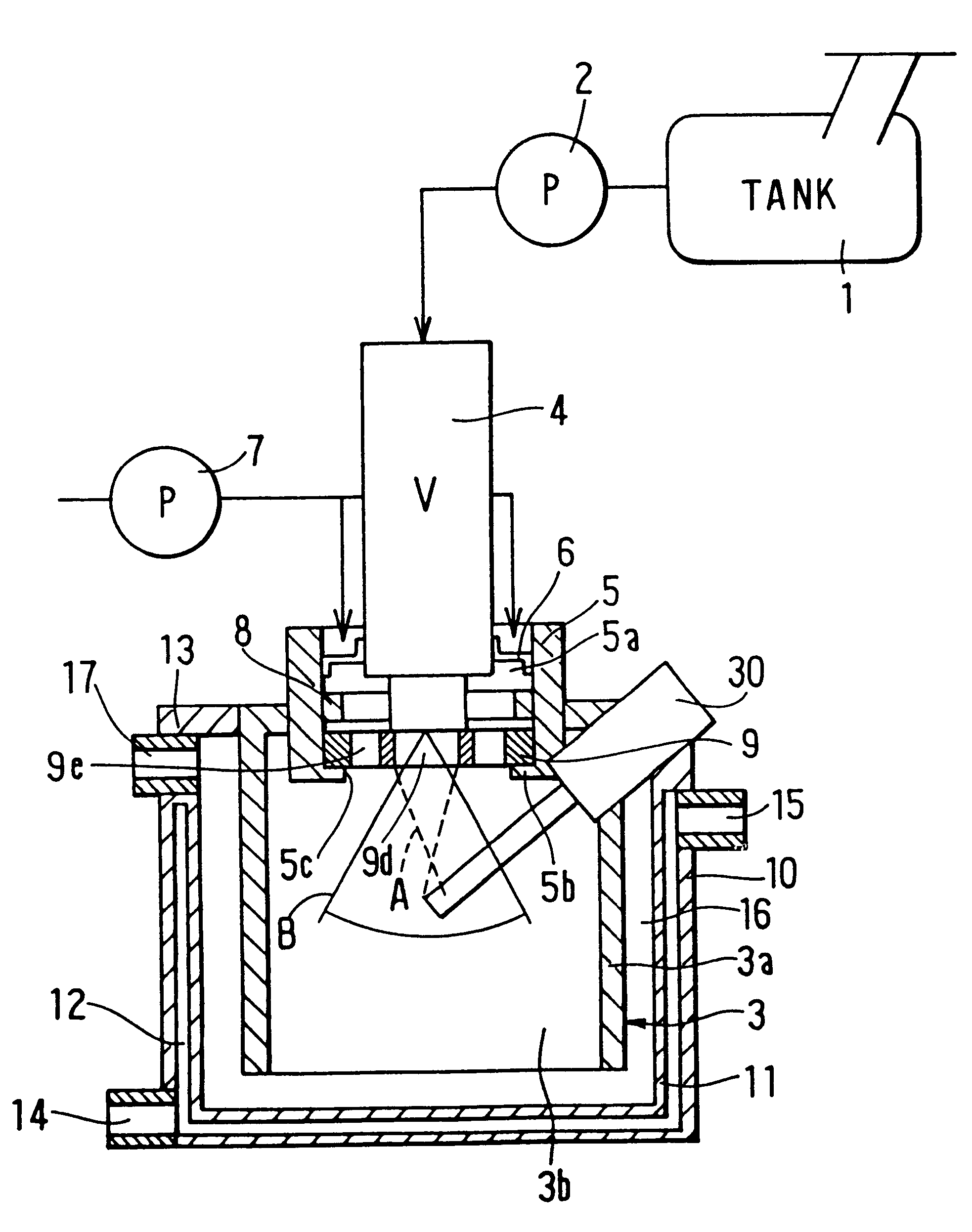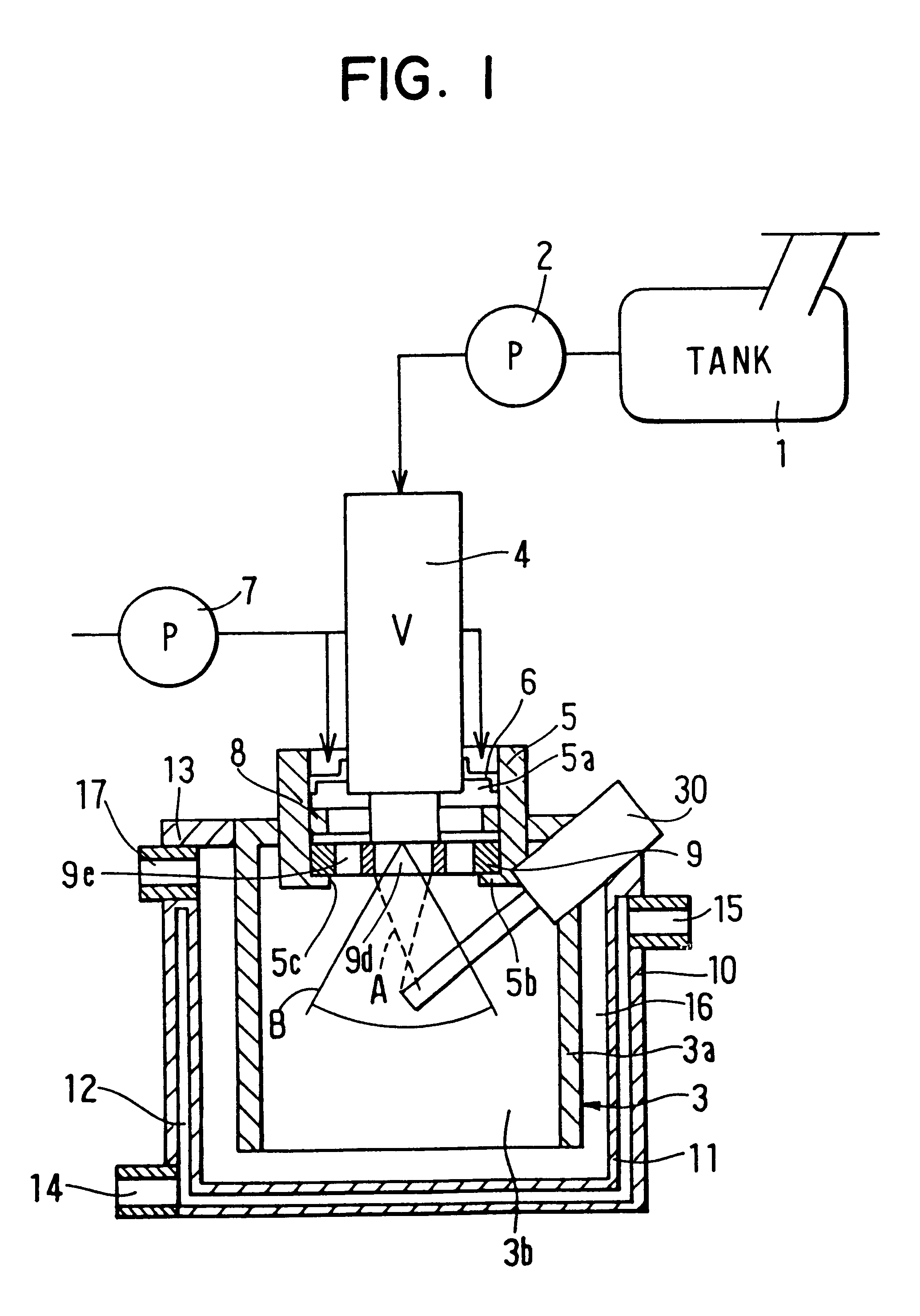Combustion device
a combustion device and combustion technology, applied in the direction of burner control devices, combustion types, combustion using lumps and pulverizing fuel, etc., can solve the problem of insufficient fuel combustion performance during normal combustion
- Summary
- Abstract
- Description
- Claims
- Application Information
AI Technical Summary
Benefits of technology
Problems solved by technology
Method used
Image
Examples
first embodiment
In the first embodiment, four injection ports 27 (see FIG. 6) are provided in the fuel injection valve 4. Further, a diameter of each injection port 27 is set at 0.15 mm, an injection angle .alpha. of fuel is set at 66.degree.. Further, a distance shown by "x" in FIG. 2, between a top end of the fuel injection valve 4 and the injection port 27 in the axial direction is set at 0.3 mm. A diameter of the plate portion 9c of the fuel collision member 9 is 16 mm, a diameter of the fuel-flowing hole 9d is 5 mm, and a distance between the first and second surfaces 9a, 9b (i.e., thickness "y" of the plate portion 9c) is 4.5 mm. Further, the plate portion 9c has a step portion 9g for supporting the fuel injection valve 4. A wall thickness (i.e., thickness "Z" in FIG. 2) of the plate portion 9c at the step portion 9g is 3.55 mm.
In a boundary between an inner wall for defining the fuel-flowing hole 9d of the fuel collision member 9 and the plate portion 9c, edges are formed on the first and se...
second embodiment
In the second embodiment, as shown in FIG. 8, four leg portions 90 are integrally formed with the plate portion 9c of the fuel collision member 9 to have a predetermined distance between adjacent two. Each of the four leg portions 90 has a hole portion 90a at a position corresponding to the flange portion 5b provided inside the cylindrical portion 5. Therefore, the leg portions 90 of the fuel collision member 9 is fixed to the flange portion 5b of the cylindrical portion 5 by screwing screws 40 into the hole portions 90a, as shown in FIGS. 8, 9.
The fuel collision member 9 is made of aluminum having thermal expansion coefficient of 31.times.10.sup.-6 / k. Further, the cylindrical portion 5 is made of nickel chrome steel having thermal expansion coefficient of 12.times.10.sup.-6 / k. Thus, when the temperature within the combustion chamber 3b is 500.degree. C., the leg portion 90 of the fuel collision member 9 are thermal-expanded approximately by 0.2 mm, the plate portion 9c is thermal...
fourth embodiment
A fourth preferred embodiment of the present invention will be now described with reference to FIGS. 12-15. In the fourth embodiment, for selectively switching the collision operation mode and the non-collision operation mode for fuel injected from the fuel injection valve 4, the pressure of air is used.
In the fourth embodiment, at the fuel injection side of the fuel injection valve 4, a valve member 56 is provided. As shown in FIGS. 12, 13A-13C, the valve member 56 includes a coil spring 53, and a valve portion 52 having an opening 50 through which injection fuel passes and four openings 51 through which air from the air pump 7 passes.
Specifically, as shown in FIG. 12, a housing 60 is disposed at the fuel injection side of the fuel injection valve 4 to form an air introduction chamber 71. The housing 60 is attached to the cover portion 70 of the combustion receiver 3. An air pipe 61 is connected to the housing 60 so that an axial line of the air pipe. 61 is crossed with an axial li...
PUM
 Login to View More
Login to View More Abstract
Description
Claims
Application Information
 Login to View More
Login to View More - R&D
- Intellectual Property
- Life Sciences
- Materials
- Tech Scout
- Unparalleled Data Quality
- Higher Quality Content
- 60% Fewer Hallucinations
Browse by: Latest US Patents, China's latest patents, Technical Efficacy Thesaurus, Application Domain, Technology Topic, Popular Technical Reports.
© 2025 PatSnap. All rights reserved.Legal|Privacy policy|Modern Slavery Act Transparency Statement|Sitemap|About US| Contact US: help@patsnap.com



